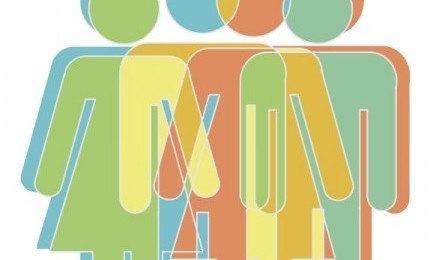
The Gay Lesbian Straight Education Network (GLSEN) has announced that in addition to the Day of Silence, it is sponsoring another day during which it encourages young impressionable and confused students to celebrate disordered thinking and immoral behavior. TransAction! Day will be held on Friday, Feb. 27, 2009. Clearly, GLSEN sees public education as its personal playground for propagandizing the nation’s children.
GLSEN jubilantly declares that:
“This is a day for education and celebration of transgender and gender non-conforming people and experiences. A day to begin having dialogues about gender and to advocate for inclusive schools for all regardless of sexual orientation or gender identity/expression. TransAction! encourages students to organize a workshop, panel discussion, or similar forum about gender, gender identity gender roles, and the broader transgender umbrella.”
Gender Identity Disorder (GID) is a psychological disorder in which people “feel discontent” with their biological sex. They wish they had been born the opposite sex. Despite what an increasingly ignorant society contends, those who suffer from this disorder are not actually, objectively the sex that they wish they were. Amputating healthy parts of their sexual anatomy, taking hormones, and cross-dressing does nothing other than create a perverse illusion that they are the sex they wish they were. Amputations, hormones, and cross-dressing are not the proper ways to treat this disorder. Those who suffer from GID deserve compassion and treatment — not affirmation, confirmation, celebration, or accommodation.
Public affirmation of this psychological disorder and its concomitant deviant behavior is making ever more troubling inroads into American society. Increasing numbers of communities are passing “transgender” laws that allow cross-dressers to use the bathrooms and dressing rooms of the sex with which they identify. That is, cross-dressing women are permitted to use men’s restrooms, and cross-dressing men are permitted to use women’s restrooms. For a glimpse into our future, read these excerpts from The Transgender Law Center’s “Peeing in Peace” document:
Most people have become used to using public bathrooms only with other people who have the same birth-assigned gender. The thought of carrying out one’s bodily functions in the same facility as the “opposite sex” makes many people feel embarrassed and uncomfortable. However, considering that the current bathroom situation does not adequately provide for the safety of many people including transgender people, women and children, embarrassment should be considered secondary. Change is often uncomfortable, even when it is for the better, but if bathrooms are going to be made safe for all people, minor discomfort is a small price to pay. . . .
In San Francisco and Oakland, it is clear that you have a right to use the bathroom that corresponds to your gender identity (for instance, if you are male-to-female, you have the right to use the women’s bathroom). You have this right because local laws in each city either clearly address the bathroom issue or some city agency has already decided what a general non-discrimination law means in that city.Of course, if you do not identify as male or female, this still doesn’t really solve your problem. . . .
“Men’s” and “women’s” bathrooms encourage people to use stereotypes about who a “man” is and who a “woman” is in deciding if they are in the right bathroom. Because of this, many people have stereotypical expectations about who will be sharing the bathroom with them. When they encounter someone who doesn’t fit that stereotype, they sometimes get confused, angry, or afraid. For that reason, it is best to be prepared for some kind of reaction from others if your gender expression does not perfectly fit pre-existing stereotypes. . . .
Strategy #1: Learn the Gender Code
Gender stereotypes are heightened in the bathroom. Therefore, sometimes the easiest way to use the bathroom is to understand these gender stereotypes, even if you find them uncomfortable or problematic. Here is some information that might help you get by until we can create safer restrooms. (Please keep in mind that this information is necessarily stereotypical and that we are including it here not because it is the way things should be, but because it is the way things currently are.):
The women’s room:
The women’s bathroom is a social space. People tend to have conversations between stalls, at the sinks, and while in line. People in the women’s room often bring in children of all genders in order to help them. It is generally a friendly place (for those who “belong”) where people are not afraid to look at each other and smile or chat. In this bathroom, folks tend to wait in line along the walls of the bathroom, away from the stalls. Often people will spend time at the sink or mirror.
The men’s room:
This is not a social space. Nobody talks or makes eye contact with anyone else. People don’t stand next to each other at urinals unless they are all filled. Usually folks in the men’s room stand in line in the middle of the bathroom. If you need a stall and there are none, pretend you just came in to wash your hands. Don’t feel out of place for using a stall. People who use the men’s room sit down sometimes too and will use a stall whether or not the urinals are full. If you need to sit down to pee and are worried that someone will notice, try using a can lid or medicine spoon to stand. You can also try one of the various stand-to-pee devices, such as the Mango product or the DJ Knows Dick Pissin’ Passin’ Packer, available at stores and online. . . .
Multi-Stall Gender-Neutral Bathrooms
Even more helpful than gender-neutral single-stall bathrooms is gender-neutral multi-stall bathrooms. Without a doubt, this would be a big change in public bathroom culture in the U.S. It is a change whose time has come, though. By eliminating the whole idea that one bathroom is for men and one is for women, we would be able to get rid of the stereotypical expectations that cause so much trouble. No one would feel like they were in the wrong bathroom or that they could make someone else feel unwelcome simply because that person did not look the right way. Parents could keep an eye on their children and people who need assistance using the bathroom would be able to get that assistance from any family member or attendant.
Most existing bathrooms would not need significant physical alterations. Urinals could be made more private by being placed inside a stall. And as new buildings are being constructed, the demand for gender-neutral bathrooms could also result in small changes to increase privacy. For instance, stall doors could be built taller and extend closer to the ground. Locks on stall doors could be made stronger and more functional.
Of course, the big hurdle with this idea is convincing building owners, employers, school administrators and elected officials that it is a workable idea. . . . the only real hurdle is people’s issues about men and women using the same bathroom at the same time.
Since this is the inaugural year for TransAction! Day, it will likely be a non-event in most schools, except for some schools in the lost states of California and Massachusetts. But parents must be vigilant. It is much easier to keep these deviant celebrations and political actions out of schools than to uproot entrenched events.
Exploiting government schools for political purposes is the very reason for GLSEN’s existence. We who hold traditional beliefs about sexuality must get over ourselves — and by that I mean our ignorance, apathy, self-consciousness, and fear — in order to oppose the malevolence that is devouring our children and our society. And we must do this even if opposition results in hostility and persecution.






























